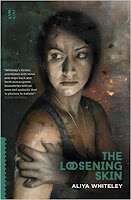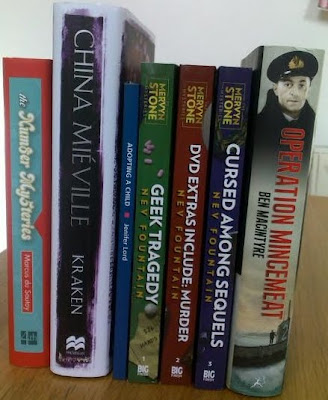On another world, in another time, Magali Kilta and her adopted sister Wisa are strange in different ways. Magali glimpses moments of the past and future while Wisa can speak to animals and trees. These powers must be kept very secret on the island of Esi, as the locals are terrified of the forthcoming festival of madness, where other worlds and realities bleed into their own. Those suspected of early signs of insanity are hounded out of the community or even killed.
Via ghosts, legends, dreams, and fragments of history and memory, we piece together how the two pairs of sisters are linked, and all they've been through and lost...
I've been entirely enchanted by this strange, rich and imaginative fantasy told on an epic scale. It's beautifully written and full of characters who feel real, for all they dwell in the most incredible, fantastic realms. These places are vivid and tangible, full of tastes and smells and textures.
There's plenty of suspense to keep the reader hooked. Myung visits an island called Ojda, not knowing (as we do) that her guide Blajine is plotting to kill her. In the years and months counting down to the festival of madness on Esi, there's an ever-growing threat of violence borne from the community's fear of insanity being infectious. As madness blooms across the island, things are especially tense - and strange. I couldn't put the book down.
There's plenty, too, on the way we are shaped by ghosts of the past and the stories we tell ourselves. At a critical junction, one pair of sisters is not reunited because one of them, having heard the full story, bitterly rejects the other, who then makes sense of why:
"I am the right person, just not the same person. It is what happens when you wait for someone to come back to you or you make a map to go somewhere you once loved: they change. Nothing is ever as you left it. ... She disappears. I want to follow her, but I know it won't help. I ache for her. Centuries of waiting and [one of the sisters, but I won't spoil which one] cannot greet me because it is not as she imagined it. Centuries of holding on to a ghost of herself, only to learn it was never going to be like it once was." (p. 389)
What really stays with me is the way time and experience bring perspective to so many of these characters, and to the reader. In the closing pages, the whole thing comes together so that we understand all the connections. It's at once satisfying and sad, the fragments knitting together to make sense of these different sisters, and the love and loss inside them.






















